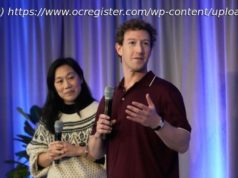AP Explains: How Native American powwows evolved over years.
The Gathering of Nations, one of the world’s largest gatherings of indigenous people, started Friday in Albuquerque. The annual event attracts about 3,000 dancers from hundreds of tribes from the U. S., Canada and Mexico and draws about 80,000 visitors who come to see dances, drum contests and competitions.
The Native American event is a powwow — a pan-American Indian celebration featuring song, dance and prayer. They are held in stadiums, rural community centers, high school gyms or outdoor arenas, and offer an opportunity for American Indians from different tribal nations with diverse histories to come together to reaffirm their shared experiences and reunite with friends.
Here’s a look at how powwows began and have evolved over the years:
___
HISTORY OF THE POWWOW
Native American tribes for centuries come together for ceremonies and communal feasts, inviting outsiders and other tribal communities to take part. The term „powwow“ comes from the Algonquin word „pau-wau“ referring to a gathering of spiritual leaders.
According to „Powwow,“ a 2006 anthology of scholarly essays about the event, modern powwow culture first appeared in the 1930s and maintained ties to specific tribal and communities practices.
Federal government officials established policies prohibiting traditional dances and public religious practices starting in the late 1800s. They remained in place until the 1930s, when a new powwow culture emerged.
It soon became an important element of the post-World War II pan-Indian movement and quickly transformed into one of the most popular expressions of ethnic awareness in Indian Country, especially among tribes in the Plains.
___
UNITING EVENT
Today, many powwows follow similar templates, with local customs shaping dances and contests during the events. The gatherings usually begin with a prayer and a formal opening led by military veterans and dancers from various tribes in a display of Native American unity.
Dancers wearing intricate, colorful regalia compete in different categories and age groups, and performers take part in singing contests before a panel of judges.
Tribal artists display their work and Native American hip hop groups sell CDs. In urban areas, the gatherings also provide an opportunity for Native Americans to network and build new friendships.
___
GATHERING OF NATIONS
The Gathering of Nations began in 1983 in a gym at present-day St. Pius X High School in Albuquerque and moved to Expo New Mexico soon after. The event relocated to the University of New Mexico and is now held at the Expo New Mexico fairground.
Over the years, it morphed into one of North America’s most popular powwows and has been showcased in popular culture ranging from literature to movies. A character in the 1998 movie „Smoke Signals,“ for example, said the Gathering of Nations was such a powerful pan-Indian event that it would have kept Columbus away if it had existed in 1492.
It’s not the only large powwow. Others include the Denver March in Colorado in March, Red Earth in Oklahoma City in June and Crow Fair in Montana in August.
___
Associated Press writer Russell Contreras is a member of the AP’s race and ethnicity team. Follow Contreras on Twitter at http://twitter.com/russcontreras






